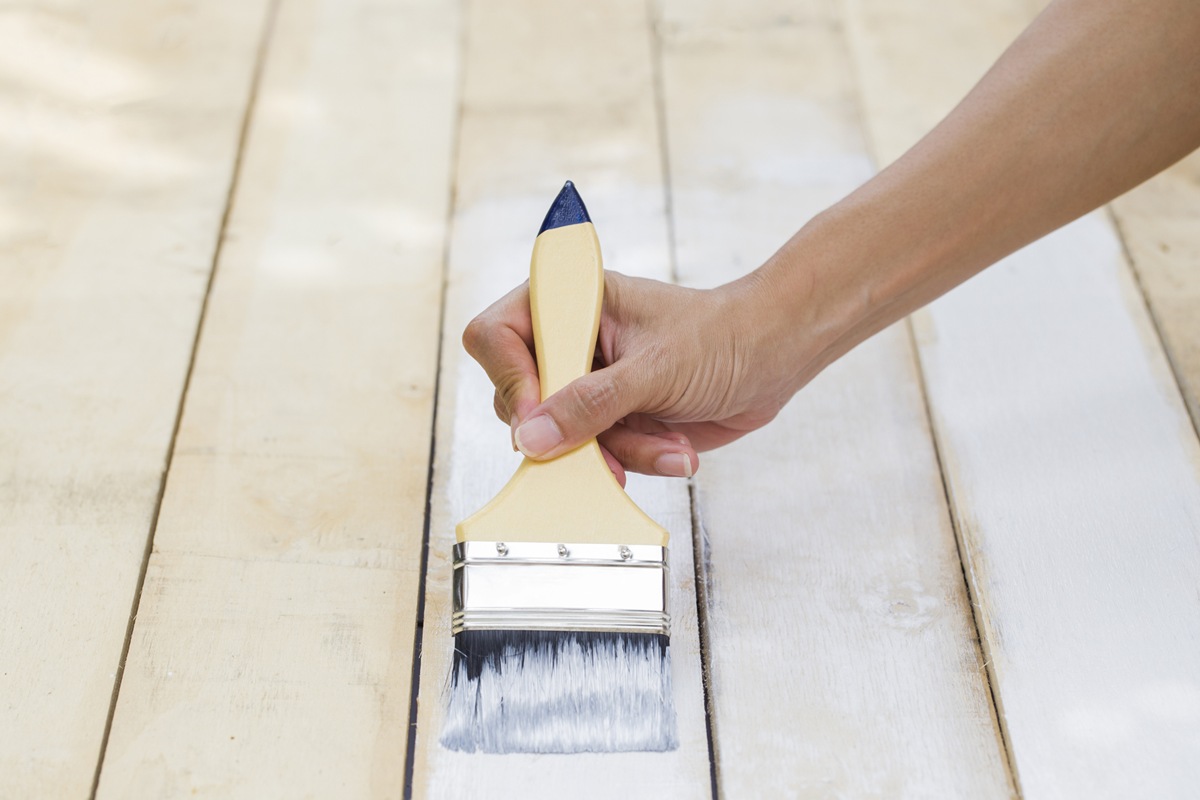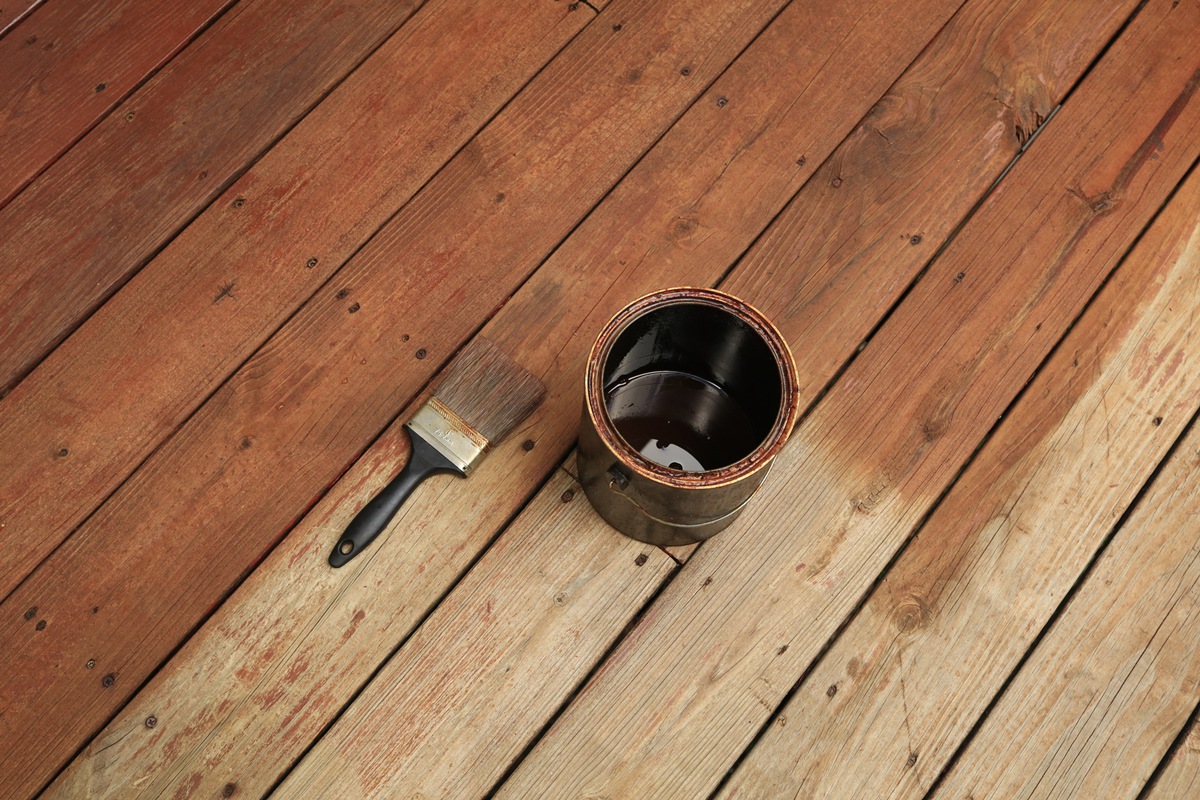When it comes to deck painting, homeowners with older, weathered decks face a big question: should you paint or stain? Choosing the right finish can make a huge difference in both how your deck looks and how long it lasts. In this blog post, we’ll walk you through the pros and cons of each option so you can confidently answer the popular question: painting vs staining a deck.
Key Takeaways:
- Painting offers a clean, colorful look and hides imperfections well.
- Staining enhances natural wood grain and is easier to maintain.
- Consider your deck’s age, wood condition, and personal style.
- Proper prep work is essential, no matter which option you choose.
- Both painting and staining can add years to your deck’s life.

Why Homeowners Ask: Paint or Stain?
Old decks can be tricky. The wood may have cracks, splinters, or sun damage. Homeowners want something that not only looks good but also protects their investment. That’s why many people search for “painting vs staining a deck” — they want the best answer, not just a generic solution.
What’s the Difference Between Painting and Staining?
Painting sits on top of the wood. It covers the surface with a protective layer and offers the widest variety of colors. Paint also hides flaws, like old stains or rough patches.
Staining soaks into the wood and lets the natural grain show through. It gives a more rustic or natural look. Stains come in clear, semi-transparent, and solid finishes.
Pros and Cons of Painting an Old Deck
Painting your deck can be a great way to breathe new life into tired, weathered boards. Before you make a decision, here’s a deeper look at the benefits and drawbacks of choosing paint over stain.
Pros:
- Hides imperfections like cracks and discoloration: Paint provides a thick, opaque layer that can effectively mask years of wear and tear.
- Comes in endless colors: Whether you prefer a bold hue or a subtle neutral, paint gives you full control over the deck’s final look.
- Offers excellent UV protection: Paint acts as a strong barrier against sun damage, preventing fading and deterioration.
- Can last 5-10 years if applied correctly: With proper prep and application, a painted deck can stand up to the elements for a long time.
Cons:
- Can peel or chip over time: If moisture gets under the paint layer or if it wasn’t applied properly, peeling can occur.
- Requires more prep and effort to apply: You’ll need to sand, clean, and often prime the deck to get the best results with paint.
- Harder to switch to stain later: Once you’ve painted a deck, it’s very difficult to revert to a stained finish without major stripping and sanding.
Pros and Cons of Staining an Old Deck
Staining is a popular option for those who want to preserve the natural beauty of their deck while still offering some protection. Here’s a closer look at what makes staining a good or not-so-good choice for old decks.
Pros:
- Easy to apply and touch up: Stains require minimal prep and can be brushed or rolled on with ease. If it starts to fade, touch-ups are simple.
- Enhances natural beauty of the wood: Unlike paint, stain lets the wood’s grain and texture shine through, giving your deck a more authentic and natural look.
- Soaks in, reducing the chance of peeling: Since stain penetrates the wood rather than sitting on top, it’s much less likely to chip or peel.
- Easier to re-stain in the future: When the stain wears down, you can typically clean the deck and apply a new coat without major scraping or sanding.
Cons:
- Doesn’t hide flaws as well: Because it’s semi-transparent, stain won’t conceal imperfections like cracks, patches, or discoloration.
- Needs more frequent reapplication (every 2-3 years): Stains don’t last as long as paint and require more regular upkeep.
- Fewer color options: While stains come in different shades, the variety is far more limited compared to paint.

Which Is Better for a Weathered Deck?
It depends on your deck’s condition and what you care about most.
Go with paint if:
- Your deck is badly damaged or discolored: Paint is a great solution for hiding years of wear, including stains, cracks, and fading that stain might not cover.
- You want a bold or uniform color: Paint gives you endless options to match your home’s exterior and create a polished, consistent look.
- You’re okay with the maintenance involved: While paint can last long, it does require more effort to apply and upkeep, including future touch-ups or reapplications.
Choose stain if:
- You want to show off natural wood grain: Stain enhances the wood’s natural character, giving a more organic and rustic appearance.
- Your deck is only mildly weathered: If the wood is still in decent shape, stain will provide protection without needing to hide imperfections.
- You prefer easier maintenance and future flexibility: Stain is easier to apply and refresh over time, making it ideal for homeowners who want a low-hassle option.
How to Prep an Old Deck for Paint or Stain
Preparing your deck properly before applying paint or stain is one of the most important steps in the process. Good prep ensures the finish will adhere well and last longer. Here’s how to do it right:
- Sweep off dirt and debris: Start by clearing the entire deck of leaves, dirt, and any other loose material to create a clean surface.
- Power wash to remove grime and mildew: Use a power washer to deep-clean the wood and eliminate any mold, mildew, or built-up grime that could affect adhesion.
- Replace or sand down splintered boards: Check for damaged boards and either replace them or sand them smooth to avoid rough surfaces or hazards.
- Let the deck dry completely: After cleaning, let the deck dry for at least 24–48 hours to ensure no moisture is trapped under your finish.
- Apply a primer (for paint) or wood conditioner (for stain): Primer helps paint stick and last longer, while a wood conditioner allows stain to penetrate evenly for a better finish.
Expert Tip: Test Before You Commit
Before committing to painting or staining your entire deck, it’s a smart idea to run a quick test. Try a small, less visible section to get a preview of how the product will look once it’s dry. This simple step allows you to see how the wood absorbs the paint or stain, how the color appears under natural light, and whether the finish complements your home’s exterior.
It also helps identify any unexpected reactions, like uneven absorption or peeling, especially if your deck has weathered areas. Taking a few extra minutes here can save you a lot of frustration later.
Final Thoughts
When it comes to painting vs staining a deck, there’s no one-size-fits-all answer. It depends on your deck’s current state, how much work you’re willing to put in, and the final look you want. Both methods can protect and beautify your outdoor space — it just comes down to your preferences.
Ready to give your deck a fresh look? TRICO PAINTING specializes in helping homeowners restore, paint, and stain aging decks with expert care. Call us today at 916-957-2633 to schedule your free consultation!

